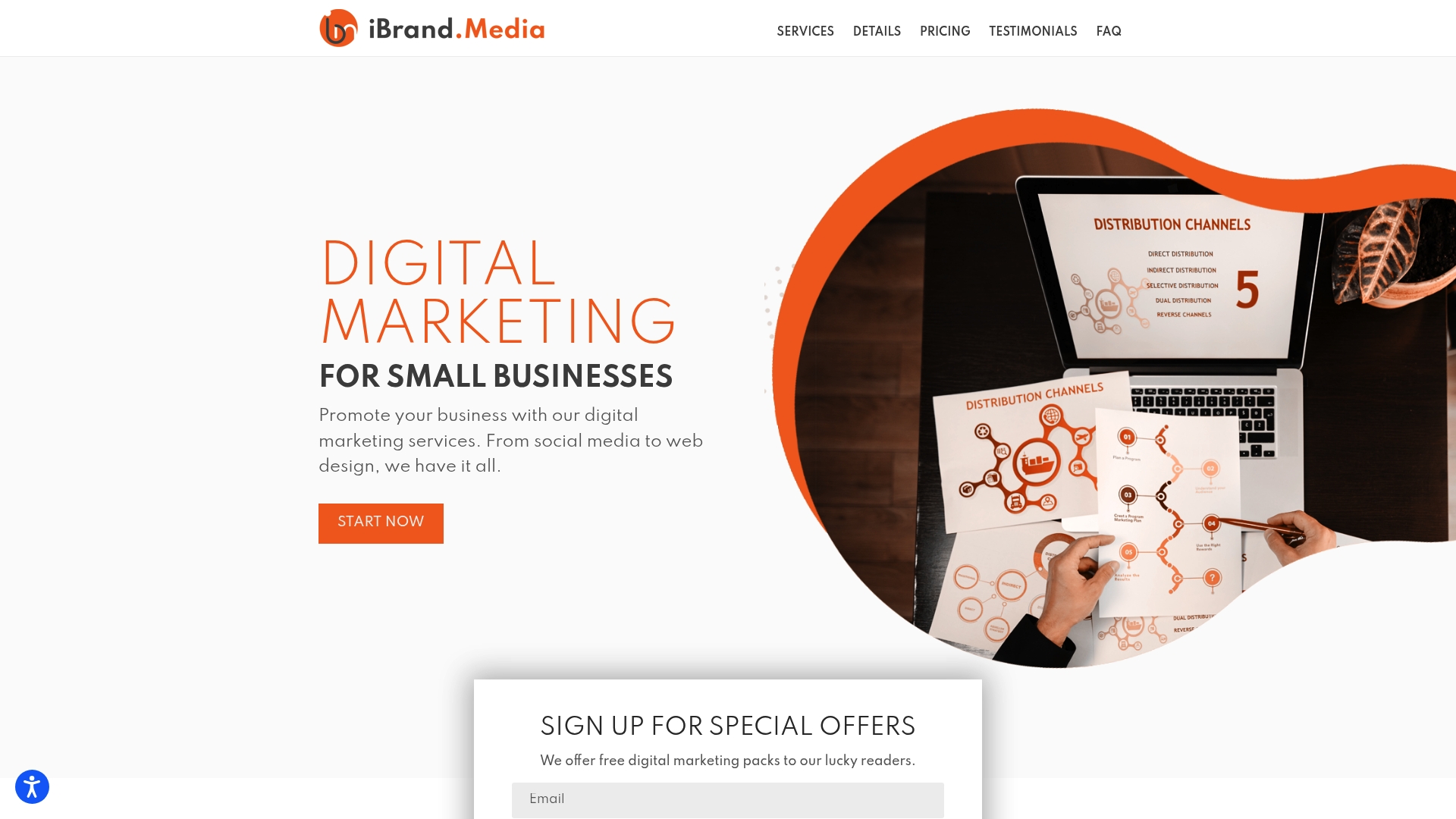Email marketing lets businesses land right in your inbox and connect on a personal level. Plenty of people think it is old news, with social media grabbing all the headlines. Yet the numbers say something different. Email marketing delivers a jaw-dropping $42 for every $1 spent and leaves newer channels scrambling to keep up. This is not about spammy blasts or outdated tricks and what follows completely rewrites the rules you thought you knew.
Table of Contents
- What Is Email Marketing And How Does It Work?
- The Importance Of Email Marketing For Small Businesses
- Key Concepts In Email Marketing: Lists, Campaigns, And Metrics
- Creating Effective Email Content That Engages Customers
- Best Practices To Enhance Email Marketing Success
Quick Summary
| Takeaway | Explanation |
|---|---|
| Email marketing drives high ROI | On average, businesses earn $42 for every $1 spent, showcasing its effectiveness in boosting revenue. |
| Building quality email lists is crucial | Successful email marketing relies on obtaining subscriber consent and maintaining an engaged list to enhance communication. |
| Personalized content increases engagement | Tailoring email content to the audience’s needs can boost engagement rates by up to 72%. |
| Focus on compliance with regulations | Adhering to privacy laws is vital; clear consent and unsubscribe options must be implemented in all campaigns. |
| Optimize for mobile and deliverability | Ensuring emails are mobile-friendly and authenticated maximizes reach and improves overall campaign success. |
What is Email Marketing and How Does It Work?
Email marketing represents a powerful digital communication strategy where businesses send targeted messages directly to subscribers’ inboxes. This strategic approach transforms digital communication by enabling personalized, direct connections between companies and their audience. Learn more about email marketing basics to understand its significant role in modern business communication.
The Core Mechanics of Email Marketing
At its fundamental level, email marketing operates through a structured process involving audience list building, message creation, and strategic distribution. Businesses collect email addresses from interested customers, usually through website sign-ups, purchase interactions, or promotional campaigns. These collected email addresses form the foundation of a marketing database, allowing companies to send carefully crafted messages designed to engage, inform, or drive specific actions.
Here is a comparison table highlighting the core components and key functions of email marketing, making it easier to understand each element’s specific role.
| Component | Description | Function |
|---|---|---|
| Subscriber List Management | Collecting and organizing contacts who have opted in | Builds the foundation for targeting |
| Content Creation | Developing compelling, relevant messages | Engages and delivers value to the audience |
| Segmentation | Dividing lists by demographics, interests, or behaviors | Enables personalized, targeted communication |
| Performance Metrics | Tracking open, click, and conversion rates | Measures campaign success and optimizes steps |
| Compliance Management | Ensuring clear consent, opt-outs, and legal adherence | Protects brand and maintains trust |
The process typically involves several key components
:
- Subscriber List Management: Collecting and organizing email contacts who have willingly opted to receive communications
- Content Creation: Developing compelling, relevant messages that provide value to recipients
- Segmentation: Dividing email lists into specific groups based on demographics, interests, or behaviors
Strategic Purpose and Functionality
Email marketing goes beyond simple message transmission. According to Campaign Monitor research, businesses can expect an average return of $42 for every $1 spent on email marketing. This impressive metric highlights the strategy’s effectiveness in driving customer engagement and generating measurable business results.
The functionality of email marketing centers on nurturing relationships, providing targeted information, and guiding potential customers through specific journeys. Whether announcing new products, sharing educational content, or offering exclusive promotions, email marketing enables businesses to maintain consistent, personalized communication with their audience.
The Importance of Email Marketing for Small Businesses
Email marketing emerges as a critical tool for small businesses seeking cost-effective and powerful communication strategies. Check out our DIY digital marketing tips to understand how targeted communication can transform business growth. The strategy provides unparalleled opportunities for direct customer engagement and measurable marketing outcomes.
Cost-Effective Marketing Channel
For small businesses operating with limited marketing budgets, email marketing represents an extremely efficient promotional method. According to Constant Contact research, email marketing delivers an average return on investment of $36 for every dollar spent. This exceptional efficiency makes it particularly attractive for entrepreneurs and small business owners who need maximum impact with minimal financial investment.

Key advantages for small businesses include:
- Low Entry Costs: Minimal financial investment required to start
- Scalable Reach: Ability to connect with hundreds or thousands of customers simultaneously
- Precise Targeting: Customizable messaging based on specific customer segments
Building Customer Relationships
Beyond pure marketing metrics, email marketing enables small businesses to cultivate meaningful connections with their audience. By delivering personalized, valuable content directly to subscribers’ inboxes, companies can establish trust, demonstrate expertise, and maintain consistent communication. This approach transforms transactional interactions into relationship-building opportunities, helping small businesses compete effectively against larger competitors with more extensive marketing resources.
Key Concepts in Email Marketing: Lists, Campaigns, and Metrics
Email marketing comprises several interconnected components that work together to create successful communication strategies. Explore our top email marketing best practices to understand how these fundamental elements drive marketing success.
Email Lists and Subscriber Management
An email list represents the foundation of any effective email marketing strategy. These digital collections of subscriber contact information are not merely databases but living ecosystems of potential customer relationships. According to HubSpot research, successful email lists are built through voluntary opt-ins that ensure genuine interest and engagement.
Key considerations for building quality email lists include:
- Permission-Based Acquisition: Collecting emails through explicit consent
- Organic Growth Strategies: Utilizing website sign-ups, events, and valuable content offers
- Regular List Maintenance: Removing inactive subscribers and managing list hygiene
Email Campaigns and Performance Metrics
Email campaigns transform lists into strategic communication tools. These targeted message sequences are designed to achieve specific marketing objectives, whether driving sales, sharing information, or nurturing customer relationships. Performance measurement becomes crucial in understanding campaign effectiveness.
Critical metrics businesses track include:
![]()
- Open Rate: Percentage of recipients who open the email
- Click-Through Rate: Number of subscribers clicking links within the email
- Conversion Rate: Percentage of recipients completing desired actions
These metrics provide insights into campaign performance, allowing businesses to continuously refine their email marketing approaches and improve audience engagement.
This table organizes common performance metrics used in email marketing, helping you quickly understand what each metric measures and its significance.
| Metric | What It Measures | Why It Matters |
|---|---|---|
| Open Rate | Percentage of recipients who open the email | Gauges subject line effectiveness and interest |
| Click-Through Rate | Number of subscribers clicking links in the email | Measures engagement and call-to-action strength |
| Conversion Rate | Percentage completing the desired action | Indicates campaign success in driving results |
| Bounce Rate | Emails not delivered to recipients’ inboxes | Reflects list quality and deliverability |
| Unsubscribe Rate | Number of recipients opting out of future emails | Shows relevance and content effectiveness |
Creating Effective Email Content that Engages Customers
Effective email content serves as the critical bridge between businesses and their audience, transforming simple communications into powerful engagement tools. Learn more about engaging customers online to understand the strategic nuances of compelling digital communication.
Understanding Content Relevance and Value
Successful email content goes beyond basic information transmission. According to Content Marketing Institute research, personalized and targeted content increases customer engagement by up to 72%. This underscores the importance of crafting messages that speak directly to subscribers’ specific needs, interests, and pain points.
Key principles for creating valuable email content include:
- Audience-Centric Approach: Designing content that addresses specific customer segments
- Clear Value Proposition: Explaining immediate benefits within the first few sentences
- Authentic Tone: Maintaining a conversational and genuine communication style
Structural Elements of Engaging Email Content
The architecture of an email plays a crucial role in capturing and maintaining reader attention. Successful emails combine strategic design with compelling copywriting to create memorable experiences. Effective content typically incorporates:
- Compelling Subject Lines: Concise, intriguing headers that prompt immediate opens
- Scannable Formatting: Using short paragraphs, bullet points, and visual breaks
- Strong Call-to-Action: Clear, prominent instructions guiding reader next steps
By understanding these fundamental content principles, businesses can transform routine email communications into powerful marketing instruments that drive meaningful customer interactions.
Best Practices to Enhance Email Marketing Success
Mastering email marketing requires strategic approaches that maximize engagement and minimize potential pitfalls. Discover targeted email marketing tips for local businesses to refine your communication strategy and drive meaningful results.
Compliance and List Management
Successful email marketing begins with rigorous adherence to legal and ethical standards. According to Data & Marketing Association research, businesses must prioritize subscriber consent and data protection. This involves implementing clear opt-in processes, providing transparent unsubscribe mechanisms, and maintaining meticulous records of subscriber permissions.
Critical compliance considerations include:
- Explicit Consent: Obtaining clear permission before sending marketing emails
- Data Privacy Regulations: Understanding and following GDPR, CAN-SPAM, and local legal requirements
- Regular List Cleaning: Removing inactive or unengaged subscribers
Technical Optimization and Deliverability
Technical elements play a crucial role in ensuring email marketing success. Businesses must focus on technical aspects that influence email performance and reach. This includes optimizing email design for various devices, managing sender reputation, and implementing robust email authentication protocols.
Key technical best practices encompass:
- Mobile Responsiveness: Designing emails that render correctly across smartphones and tablets
- Sender Authentication: Using SPF, DKIM, and DMARC to improve email deliverability
- Performance Monitoring: Tracking bounce rates, spam complaints, and engagement metrics
By integrating these comprehensive strategies, businesses can significantly enhance their email marketing effectiveness, ensuring messages reach intended audiences and drive meaningful interactions.
Take Your Email Marketing from Concept to Conversion with Ibrand.media
Are you struggling to build an effective email marketing foundation or frustrated by low open rates and weak engagement? Many business owners find it hard to manage subscriber lists, create engaging campaigns, and track the right performance metrics. Turning these fundamentals into real business growth can feel overwhelming, especially with a small team and budget. That is where our expertise at Ibrand.media becomes your advantage. Explore how our practical insights and tailored solutions can make a difference for you on our Uncategorized | Ibrandmedia resource page.

Ready to experience higher open rates, stronger customer relationships, and real returns on every dollar you invest? Partner with Ibrand.media for email marketing strategies designed for small businesses. Visit Ibrand.media to request your customized plan and start seeing results today. Don’t let another month slip by with missed opportunities—take action now and see how a personalized approach can transform your email campaigns.
Frequently Asked Questions
What is email marketing?
Email marketing is a digital communication strategy where businesses send targeted messages directly to subscribers’ inboxes to engage, inform, and drive specific actions.
How can small businesses benefit from email marketing?
Small businesses can leverage email marketing for cost-effective communication, building customer relationships, targeting specific audiences, and generating a high return on investment.
What are the key components of a successful email marketing strategy?
Key components include subscriber list management, content creation, segmentation, and tracking performance metrics to continuously optimize campaigns.
What are important metrics to track in email marketing?
Important metrics include open rate, click-through rate, and conversion rate, which help measure campaign effectiveness and audience engagement.
Recommended
- Understanding Email Marketing Basics for Small Businesses | Ibrandmedia
- 11 Email Marketing Best Practices for Small Businesses | Ibrandmedia
- Understanding Content Marketing for Beginners: A Simple Guide | Ibrandmedia
- 7 Common Online Marketing Mistakes to Avoid | Ibrandmedia
- Email Campaigns and SEO: Winning Strategies for 2025
- Master The Art Of Email Marketing: Tips For Creating Effective Campaigns

Recent Comments